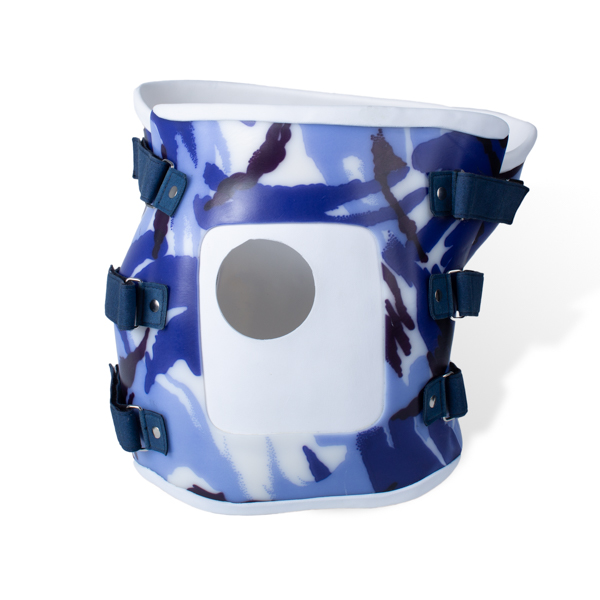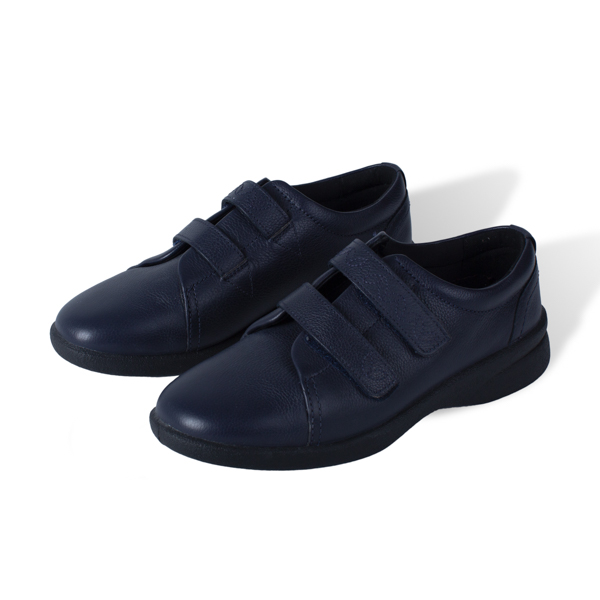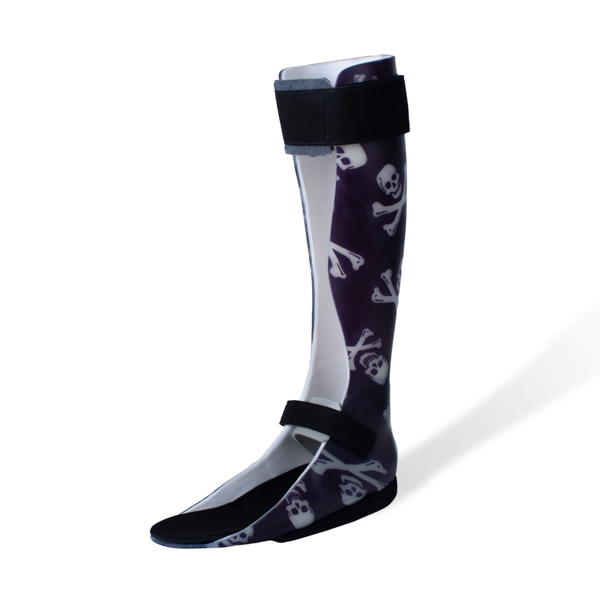Cerebral palsy (CP) is classified as a non-progressive type of impairment to the immature brain. This causes an inability to control muscles, movement and posture. The severity of the condition can be very mild or extremely debilitating.
In adults, the non-progressive classification is questionable. Some people with CP lose function as they age and, as a result of long-term abnormal muscle patterns and movements, new physical problems emerge later in life.
New symptoms that may emerge with adults with CP may include:
New symptoms can be diagnosed with physical assessment, MRI and x-ray imaging. An adult with CP can be re-referred back to an orthopaedic or neuro consultant for diagnosis and treatment.
Orthotic treatment for CP is about managing symptoms and preventing further problems from occurring.
Lycra Garments - used on upper or lower limb to control rotation, reduce contractures forming, maintain and provide good posture and position.
Lower limb splinting - when the range of motion at a joint, such as the ankle, is limited, a Fixed Ankle Foot Orthosis (AFO) can help to normalise walking patterns, while immobilising the joint to maintain range and reduce pain. This type of orthosis will also help promote good hip and knee extension in gait. This will reduce the risk of contractures and reduce energy expenditure.
AFOs can also be jointed at the ankle. These can be used when the ankle has sufficient movement. In some cases, the ankle joint can be sprung to help the foot lift up in the swing phase.
Footwear and foot orthotics - footwear can be used to accommodate plastic splinting and improve additional stability. At LOC, we provide a wide range of styles/designs to suit the cosmetic and functional needs of each patient. Footwear may also be adapted with specialist soles to aid normal walking patterns and reduce stresses to lower limbs, as a result of leg length discrepancies. Foot orthotics are used widely in adults with CP. Due to contractures and abnormal muscle patterns, it is common to develop high pressures in the forefoot during walking and custom made foot orthotics can offload these painful regions, provide comfort and aid mobility.
Spinal bracing - used to stabilise the lumbar and thoracic spine and promote good posture.



An AFO is an Ankle Foot Orthosis which as the name would suggest encompasses the ankle and foot. The objective is to control the position and movement of the ankle. AFOs are used to support weak limbs; they can also be used to immobilise the ankle and lower leg to correct foot drop. When set up correctly they can also have a great influence on the knee and hip joints. They are the most commonly used Orthoses.
The length of time that one needs to wear an AFO very much depends on the condition being treated. If it is a long-term condition like cerebral palsy or post-polio syndrome it is likely to be years as the condition cannot be cured. Your orthotist will advise you.
A patient’s comfort in their AFO is vital for compliance with the prescribed wearing regime.
So there are a number of steps the orthotist should take to ensure a comfortable fit: the patient’s heel should fit fully into the heel cup without excess space, the contours of the plantar surface of the AFO should match the patient’s foot, for children there needs to be up to half an inch growth room in the toe shelf length. At LOC we use our Gait Laboratories at our Kingston and Manchester clinics to fine-tune our bespoke orthotics.
A GRAFO is used to control instabilities in the lower limb by maintaining proper alignment of limbs and controlling their motion. It reaches around to the front of the knee extending down to the ankle. It works by altering a patient’s limb presentation to displace load and impact as well as offering further control to the knee.
The cost of an AFO is dependent on the type of AFO that has been prescribed and the material that it has been made with. Carbon fibre will be more expensive than metal or plastic for example. LOC’s bespoke AFOs cost can be found on our Orthotic Prices page.
The ability to drive while wearing an AFO is dependent on the condition being treated and the orthosis that has been prescribed. If wearing a hinged AFO, for example, you will be able to drive, but if wearing a knee brace, you won’t. Your orthotist will advise you.
The most flexible type of AFO is a Dynamic Ankle Foot Orthosis (DAFO). It is thin and provides flexible support to the foot and ankle.
Both normal AFOs and DAFOs improve static balance (eg: while standing). Research among MS sufferers suggests that DAFOs aided balance while walking more than AFOs.
The simple answer is: yes they can. However one has to be sensible and look for wide-fitting trousers/jeans preferably of light and thin material.
Typically an AFO is stiff and rigid whereas a DAFO is thin, flexible and wraps around the patient’s entire foot. A DAFO provides support but also allows some range of normal movement.
A Supra Malleolar Orthosis SMO gets its name from the part of the body it encompasses. Thus an SMO supports the leg just above the ankle bone or malleoli. It allows dorsiflexion and plantar flexion(toes up and toes down) but eliminates mediolateral movement.
It typically takes a few weeks but is slightly dependent on the chosen materials and current availability.

Sofia’s AFOs Help Her to Stand and Walk During Lockdown

LOC’s gait lab has helped Lilac to move independently

Sam Walmsley to explain OSKAR Framework to Neuro Conference 2021 Delegates

Meet John Turner – our Manchester Orthotics Lead

LOC to launch OSKAR Framework to CMSUK 2020 Delegates

OSKAR Clinic AFOs and gait laboratory are game-changers for cerebral palsy patient Austin

Cerebral palsy patient, Sophie, maintains independence during lockdown with LOC’s help